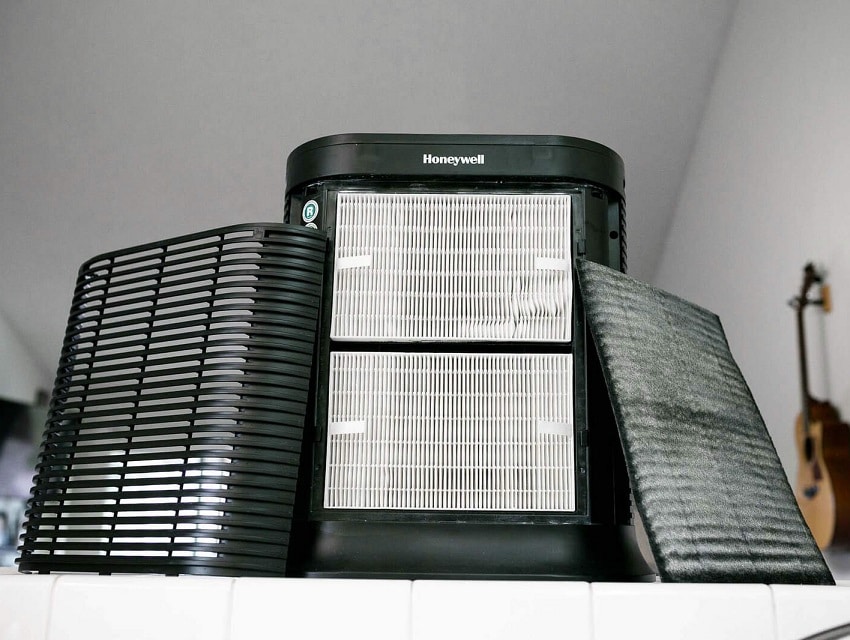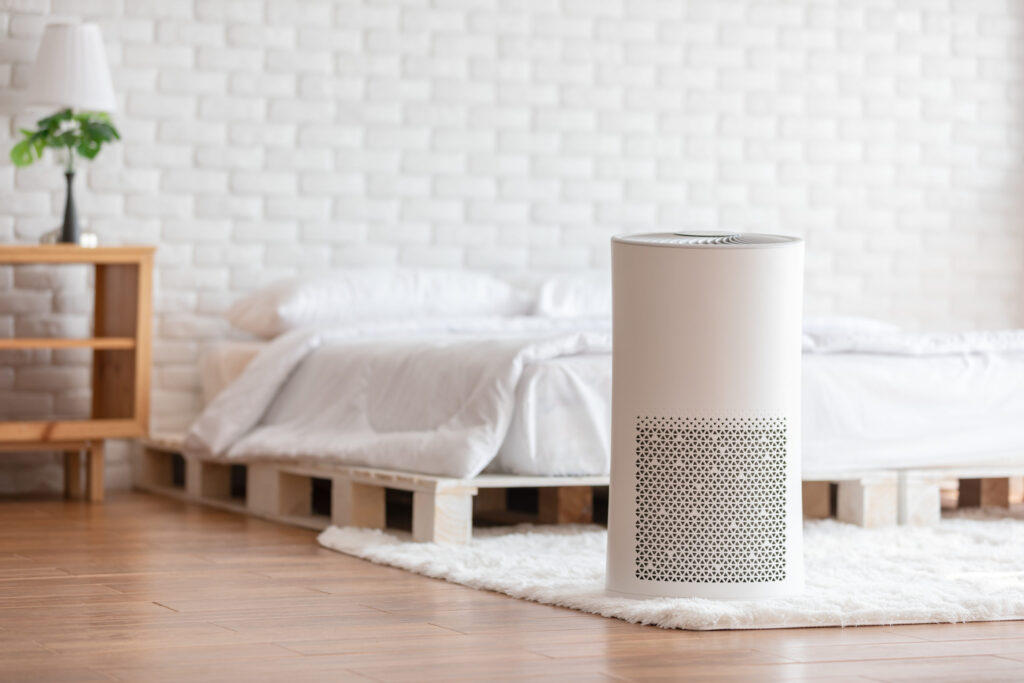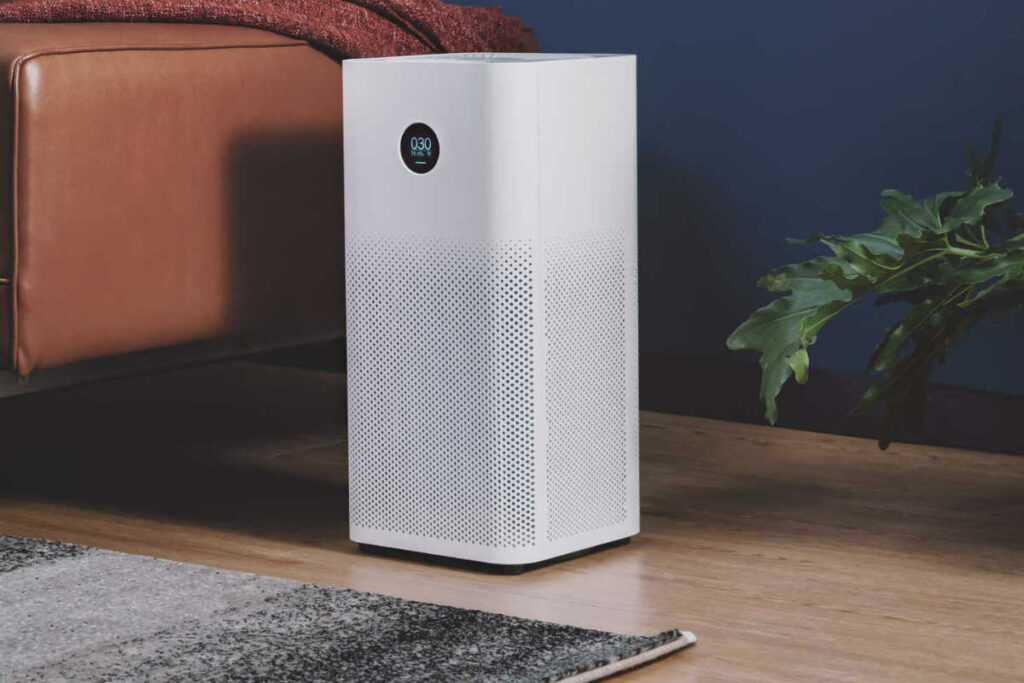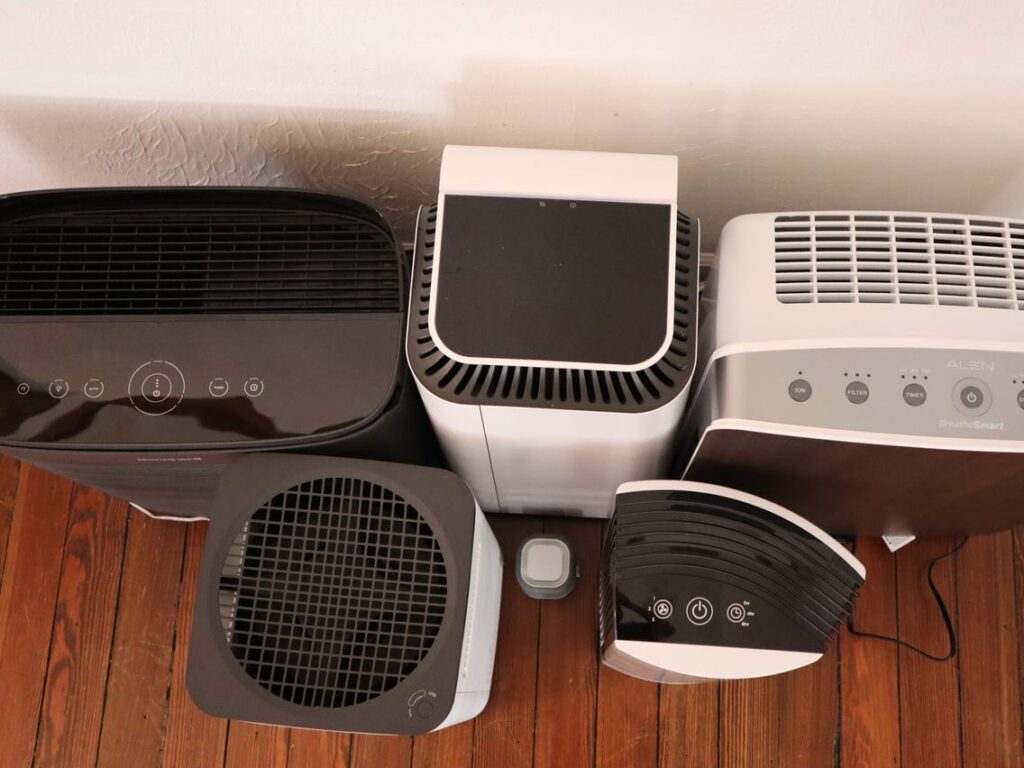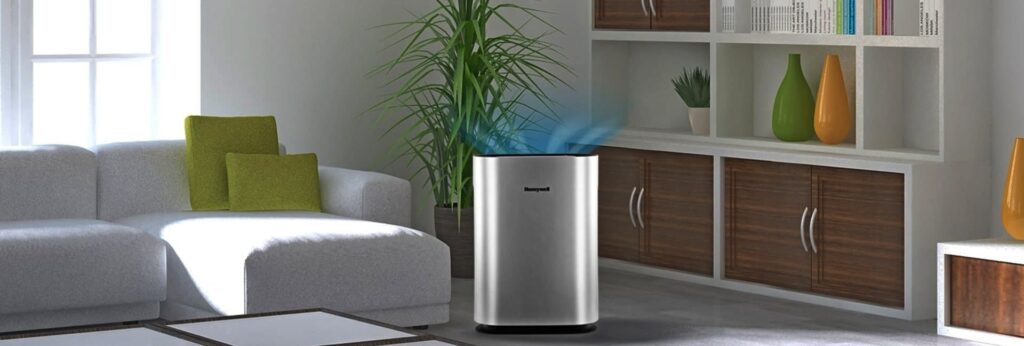Following the outbreak of the COVID-19 pandemic, maintaining good air quality has become a necessity to protect our health. Cleaning the air of all flying and polluting particles is a necessity, as is eating a balanced diet or engaging in exercises.
You can improve your daily health by breathing healthier air, as this can help you reduce the risks of allergies and asthma.
Air ionizers and air purifiers are two of the most effective which can help fight against all indoor air pollution and odors. However, they are designed differently and they work differently.
So, which do you choose? What is the difference between an air purifier and an ionizer?
To help you make the best decision, in this air ionizer vs air purifier comparison article, we will tell you what both systems are, how they work, what their advantages and disadvantages are, and to whom each type is designed for.
The air ionizer or ionic air purifier is a device that emits a large number of negative ions to free the air from pollution particles that are positively charged.
More traditional, there is also the ionizer with a filtration system. With these, the pollution remains trapped in the different layers of filters, including the HEPA filter.
Also called an ionizer air purifier, this device should be chosen according to its range, ability to capture polluting particles, and, of course, its reliability.
A typical example of an effective air ionizer is the Ivation Ozone Generator. It’s an air purifier, ionizer, and deodorizer with a coverage area of up to 3500 square feet. It is perfect for removing pollen, dust, smoke, and pet dander.
A molecule (assembly of at least 2 atoms) is electrically neutral. By losing one or more electrons, the molecule becomes electrically charged and becomes an ion. An ion can be positively charged (we call it cation) or negatively (anion).
Particles that pollute the air, such as dust, animal hair, pollen, bacteria, cigarette smoke, or mold, are positively charged.
The air ionizer, thanks to a high voltage electric current, generates negative ions which capture the positive ions, and therefore the particles, by an electrostatic attraction effect.
When merged, the particles become heavier. They can no longer stay in the air and fall to the ground or are attracted to the device.
Good to know: There are also water ionizers that produce alkaline water with a better PH. Others are dedicated to the ionization of the swimming pool.
Air ionizers are useful for people with allergies, chemical sensitivities, and asthma as they are effective in removing dust, viruses, pet dander, mold, and pollen from the air.
The first advantage of the ionizer is its ease of use since it only needs to be plugged in. The ionizer is generally not too energy-intensive and requires very little maintenance since there is no filter to change.
Also, the ionizer works very quickly and quietly. It can capture even very small particles (less than a micron).
Some models are very aesthetic and fit easily into the room.
Finally, according to some studies, negative ions have a beneficial effect on health Trusted Source Negative Ions Create Positive Vibes There’s something in the air that just may boost your mood — get a whiff of negative ions. www.webmd.com . When they reach the bloodstream, they produce serotonin that improves mood, relieves stress, and alleviates depression.
Polluting particles are not destroyed, but precipitated on the ground or captured by the device. It is, therefore, necessary to vacuum regularly.
The ions use airflow to move. Thus, many ionizers are equipped with a fan, which can increase the sound level of the device to more than 50 decibels (dB)
Both systems are used to purify or clean air or water. But these devices have their differences.
One of the differences between the two is that the ozone generator, also called, Ozonator only works for a controlled time. These devices typically feature timers while the ionizer continuously produces ions. Ozone generators produce ozone as the main product while ionizers produce ions.
Also, the processes differ in the way they act. As in the case of the ozonator, the creation of ozone disintegrates and breaks all the remaining contaminants (dust, mites, hair, etc). However, ionizers are powered by millions of negative ions which join forces to kill germs.
Also, when an ionizer is used, there is no need to move away from it while it is working because breathing ionizing air is beneficial for our body. But in the case of ozonators, it is not advisable to be around them if the devices are very powerful. Of course, it should be noted that ozonators for home use are safe.
Regarding the air that the two systems can emit, the ozone generator provides an environment of pure oxygen, and the ionizer provides a clean environment that smells in a different, perhaps more natural way.
In addition to protecting us against solar radiation, ozone is one of the most powerful disinfectants and sterilants you can find. Ozone is used, for example, as a disinfection measure in hospitals and can also be used by people with allergies. Ozone will damage the DNA of fungi as well as viruses and insects, preventing their reproduction.
Ozone generators produce gas through either UV lights or an electrical voltage that will generate what is called the Corona Discharge (or Corona Effect). The generation of ozone by corona discharge is the most common nowadays and has the most advantages. The advantages of the corona discharge method are greater durability of the unit, better ozone production, and better cost/efficiency.
An air purifier is a device for removing dust from the ambient air through the use of installed filters. The process consists of filtering the air to eliminate domestic or industrial pollution.
Thanks to its air suction system and filters, the purifier catches contaminants as the air passes through the device.
The efficiency level of the purifier and the treatment time of the device vary according to a few criteria. These are the level of air pollution, the surface to be sanitized and the device used.
Some whole-house air purifiers can cover areas up to 2500 square feet.
First of all, the purifier used must be adapted to these criteria to be effective. The use of these devices does not turn the room into a healthy bubble, free from any pollutants.
Moreover, no brand undertakes to give such a result. Rather, the manufacturers claim an efficiency of over 99%. This device only helps to fight against the bad impacts of indoor air pollutants.
The function of the device is above all to relieve people exposed to ambient air pollution. Thus, ideas differ on the use of an air purifier. While some are worried about the pollution of the air they breathe, others find it too painful to have to purify everything. Otherwise, for people prone to allergies, experiencing asthma problems and other respiratory diseases, an asthma air purifier would be beneficial for them.
To optimize the results of the air purifier, the best technique is not to constantly recycle the air in the house, but rather to renew it. Substances that cannot be trapped by air purifiers will automatically be expelled outside.
Thus, with or without an air purifier, it is imperative to ventilate the interior of the home for at least 15 minutes per day. This should be done both in winter and in summer.
Generally, their operating system is the same. The air is sucked in by the device.
It passes through a pre-filter which contains thick particles such as hair and animal hair.
It is sent to the second filter which does more specialized work, including absorbing odors, smoke, and other organic components.
When it is purified, the air is forced back into the house.
As for air purifiers with filter systems, they are based on a mesh of carbon, foam, or fiberglass filters. Models that have the HEPA (High Air Particle Efficiency) quality index can retain the smallest particles such as viruses and mold spores.
They are categorized from H10 to H14 according to their effectiveness. Carbon filters are among the most practical. Air purifiers with carbon filters can suck up VOCs (volatile organic compounds), chemical pollutants released from household products, cigarette smoke, and exhaust fumes.
However, some models combine carbon and HEPA filters. One of the best air purifiers with carbon and HEPA filters is the Bissell Smart Purifier for Large Room and Home. This purifier works quietly in the removal of allergens, pets, dust, pollen, dander, smoke, and odor.
You may need an air purifier if you’re at a high risk of COVID-19 complications. It is most recommended for people with allergies, asthma, and other respiratory problems.
The use of an air purifier eliminates pollutants by burning, retaining, or destroying them. The device has a system that sucks in the air and then passes it through filters of different stages (the pre-filter and the filters). Each filter has its main role which is more and more pointed from the outside to the inside. The prefilters generally retain the largest particles such as hairs, grains of dust, etc. The main filters retain those which are microscopic, namely the organic components, the smoke, or the odors. Once purified, the air is released into the room.
Air purifiers are beneficial for people prone to allergies, experiencing asthma problems, and other respiratory diseases. By choosing the right model, an air purifier can guarantee less respiratory discomfort, less redness or itching in the eyes, and less sneezing.
It should be noted however that the air purifier also has its limits. Depending on the type of device, the volume of air that it can suck may be less. It is, therefore, necessary to buy a larger and more powerful model to be able to clean a larger volume of air. However, the more efficient the air purifier is, the more expensive it is. The budget available to the buyer will then limit his choices.
The effectiveness of the air purifier can be limited by the level of air pollution. If the atmosphere is too saturated, the device will only be able to purify a small part of the air. Moreover, even the manufacturers do not give a total guarantee or do not undertake to ensure an impeccable result. The limit of the efficiency of the device is 99% maximum.
Another drawback of this device is that its effectiveness always requires the support of regular cleaning. Therefore, it is always necessary to vacuum or even brush and wash the house.
Air ionizers and air purifiers with filters have a lot in common. But they are different in how they work. Below, we’ll see how they compare in terms of functionality, applications, performance, and cost-effectiveness.
| Ionic air purifier | HEPA air purifier | |
| Functions | Removes dust, viruses, pet dander, mold, and pollen from the air. | Retains hair; absorbs odors, smoke, and other organic components; and retains the smallest particles such as viruses and mold spores. |
| Applications | Useful for people with allergies, chemical sensitivities, and asthma | Ideal for people with allergies, asthma, and other respiratory problems. |
| Filtration | Not all use filters | Uses air filter |
| Coverage area | Air ionizers usually have larger coverage areas than HEPA air purifiers. | 300 to 1900 square feet |
| Portability | Air ionizers are more portable than air purifiers | Most air purifiers are portable enough for movability and transportability |
| Maintenance | Doesn’t require replacement of filter | Requires filter replacement and regular maintenance |
| Running cost | Consumes high energy | Low energy cost |
| Price | $40 to $245 | $20 to $300 |
Although an air purifier and an ionizer serve the same purposes, they differ in their operating principles. But also, their modes of use are different. So which is the overall winner in this air ionizer vs air purifier comparison?
The ionizer is cheaper than the filter air purifier, it is also less effective than the latter at neutralizing unwanted gases, fumes, and odors. On the other hand, it is smaller, consumes less energy when it is not equipped with a fan and is therefore completely silent. Also, having no filter, there is no need to change it!
The air purifier is very popular for its overall efficiency, and its ability to eliminate in particular chemical gases, fumes, and odors.
